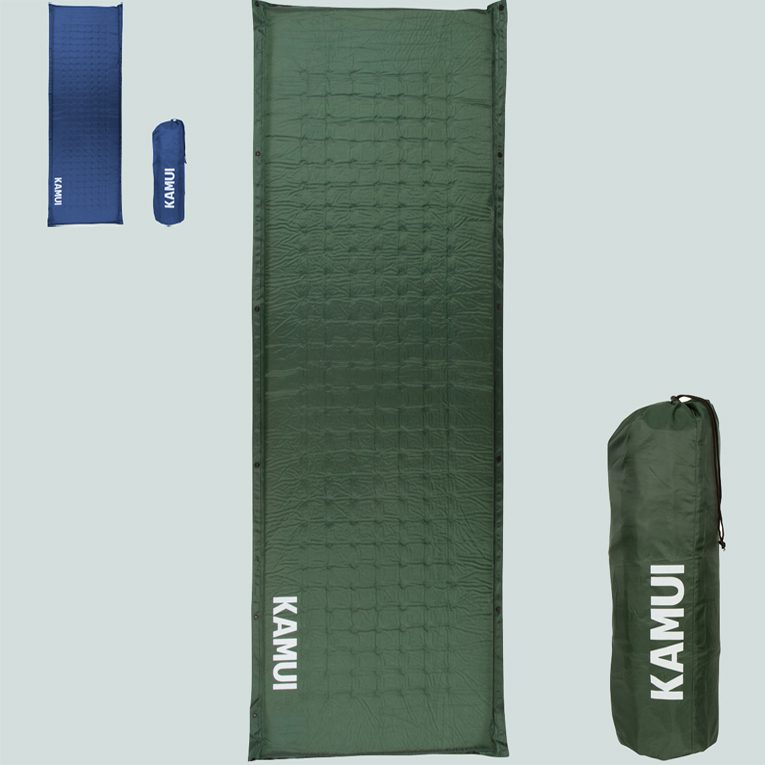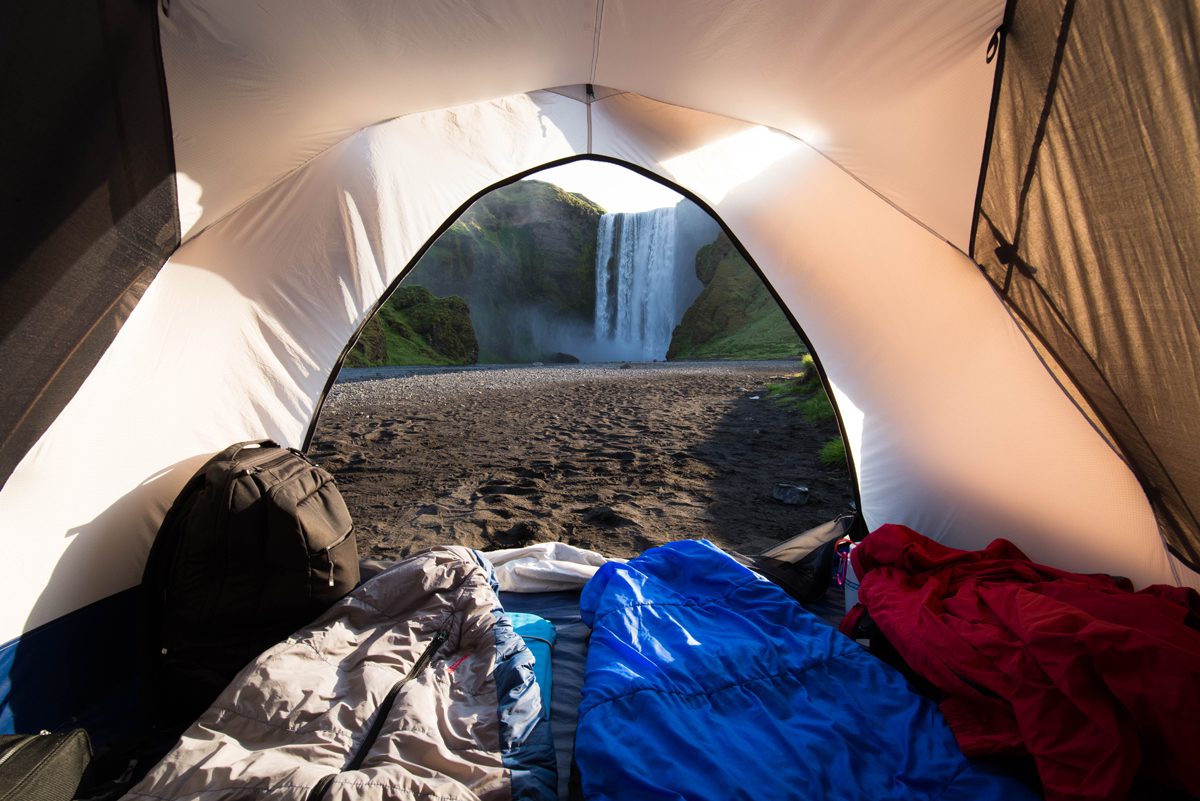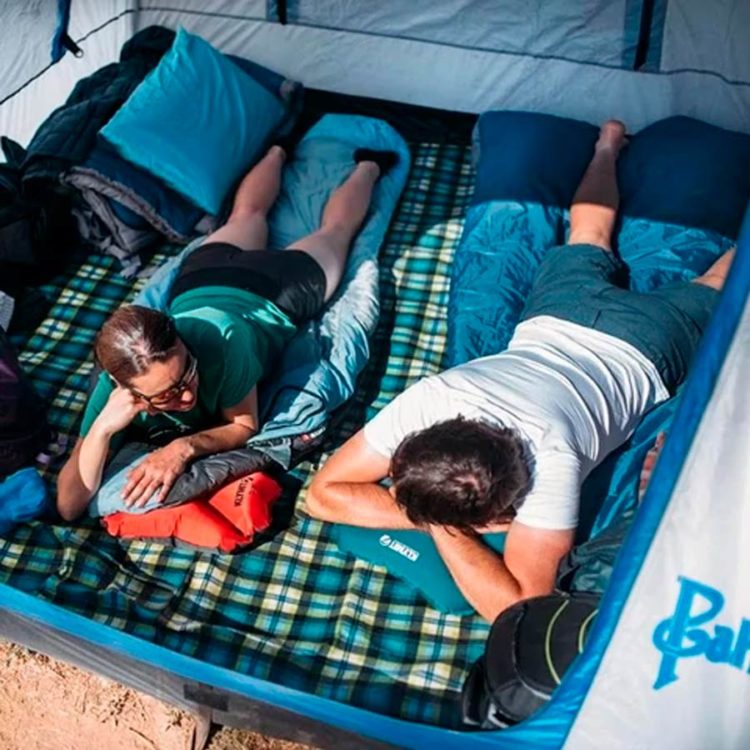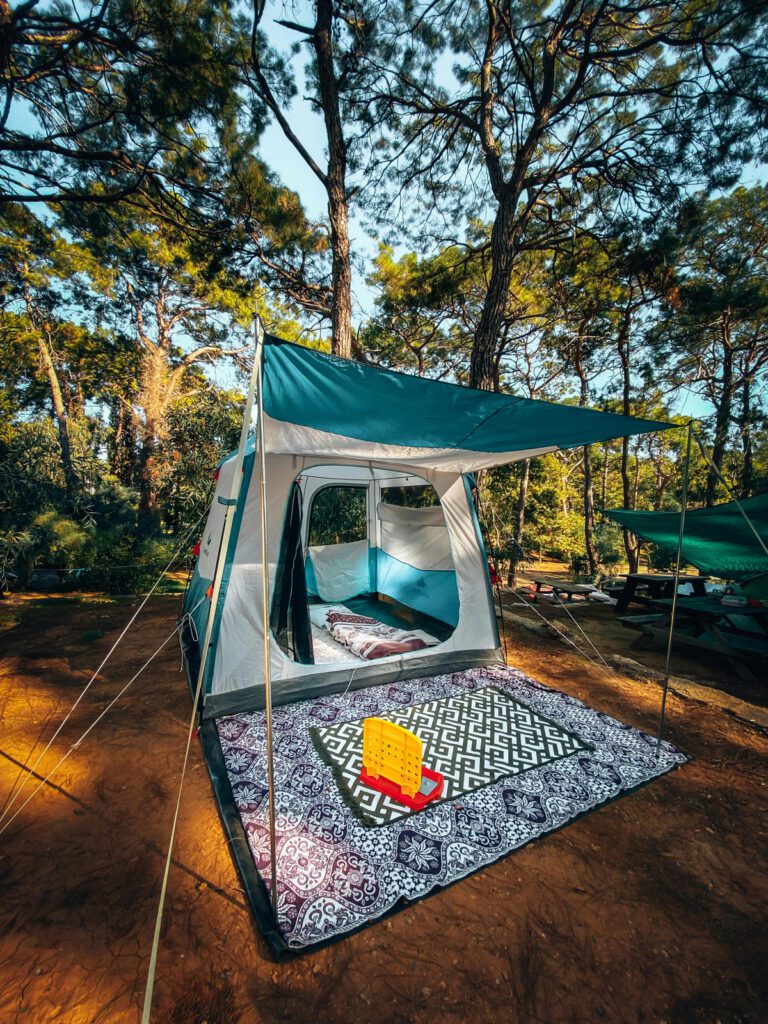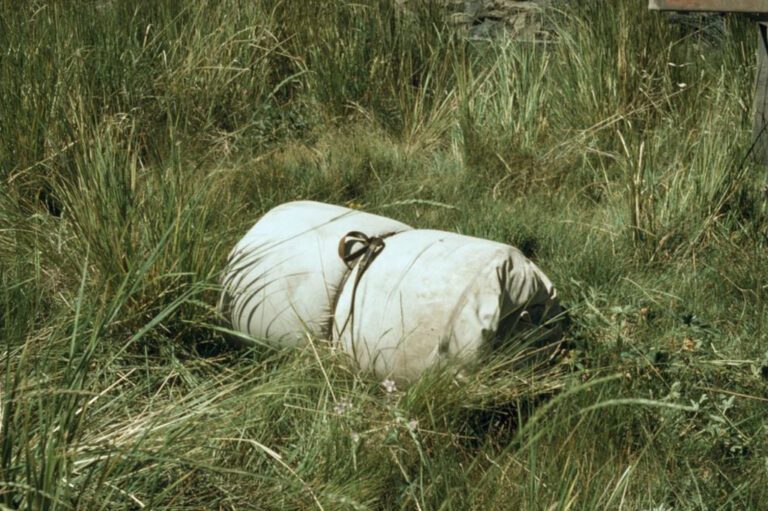Phone
+1-650-666-095
Contact E-mail
[email protected]
Address
16192 Coastal Hwy, Lewes, DE 19958-3608
Reasons Why You Need a Hammock Camping Sleeping Pad for Your next Hammock Camping Trip
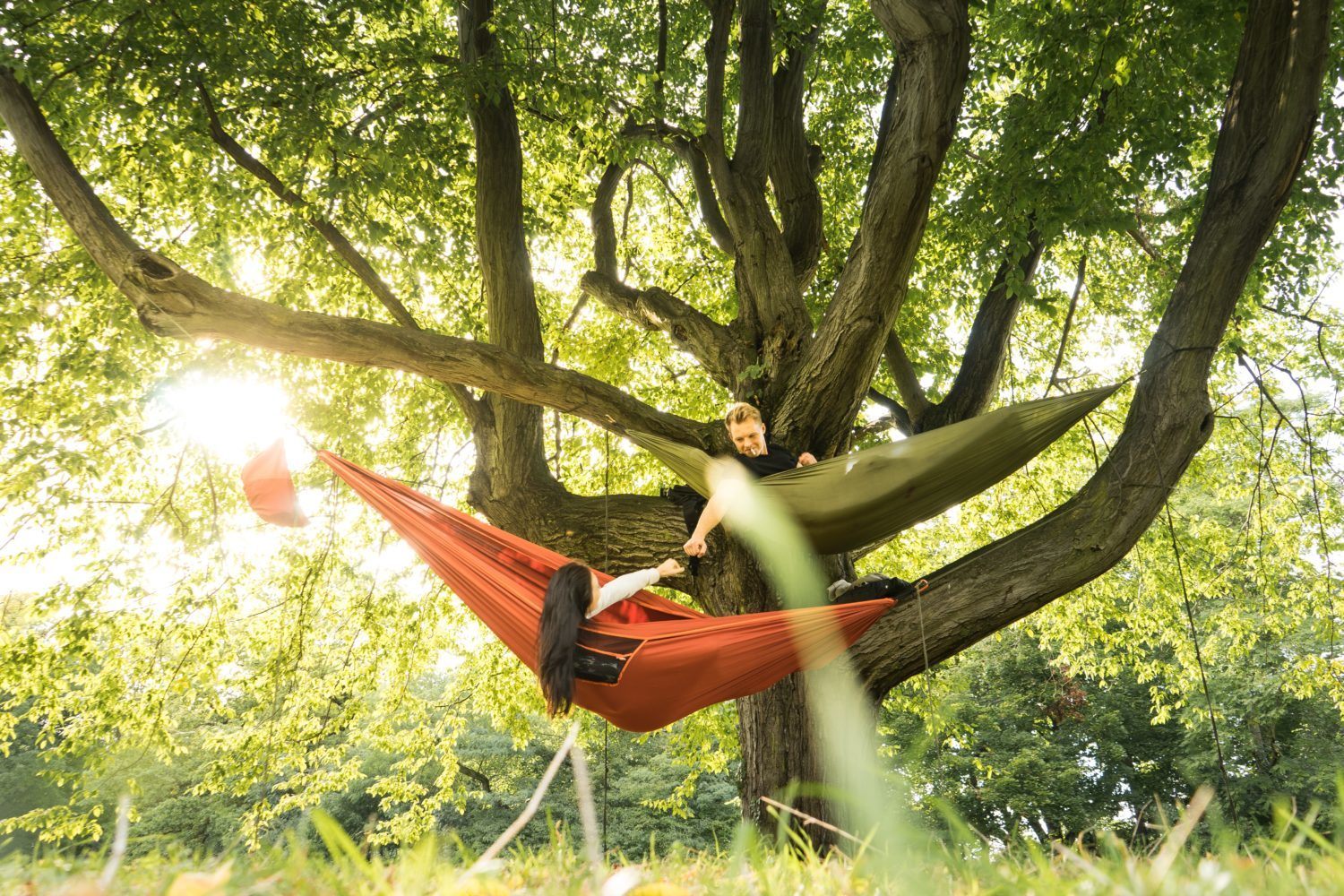

Are you planning a hammock camping vacation and can’t figure out if you need a sleeping pad? This article has the best hammock camping sleeping pad tips and tricks you might need.
A sleeping pad can make hammock camping one of the best sleep experiences of any camping trip. Many hammock camp setups are designed to be used with or without a sleeping pad. Hammock camping with a sleeping pad provides added comfort.


What are the Benefits of Using a Sleeping Pad with Your Hammock?
Warmth Through Proper Insulation
Sleeping pads provide insulation from the air surrounding your hammock. Your sleeping bag will keep you comfortable on the top and the sides, but the pressure of your body will compress the bag beneath you. A sleeping pad on your backside will help you maintain a comfortable temperature throughout the night. Mummy bags and even hammock under quilts can’t give you the extra warmth you need. Hence, a sleeping pad that can adjust to the size of your hammock is necessary so that you won’t lose body heat.
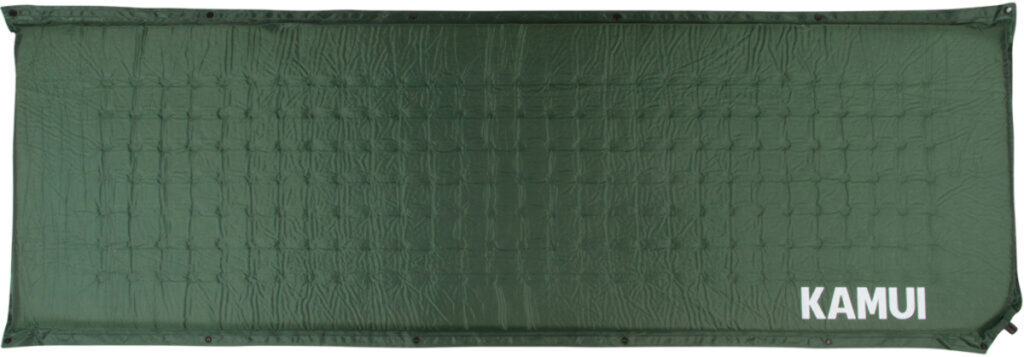

Flatter Sleeping Surface
When sleeping in a hammock, your body is often forced into a slight curve. Hammock camping with a sleeping pad can provide a much flatter surface for your body. A flat surface will make it easier for a hammock camper to adjust to their favorite sleeping position. Sleeping on your stomach or side is comfortable but possible only in a hammock when you add a sleeping pad.
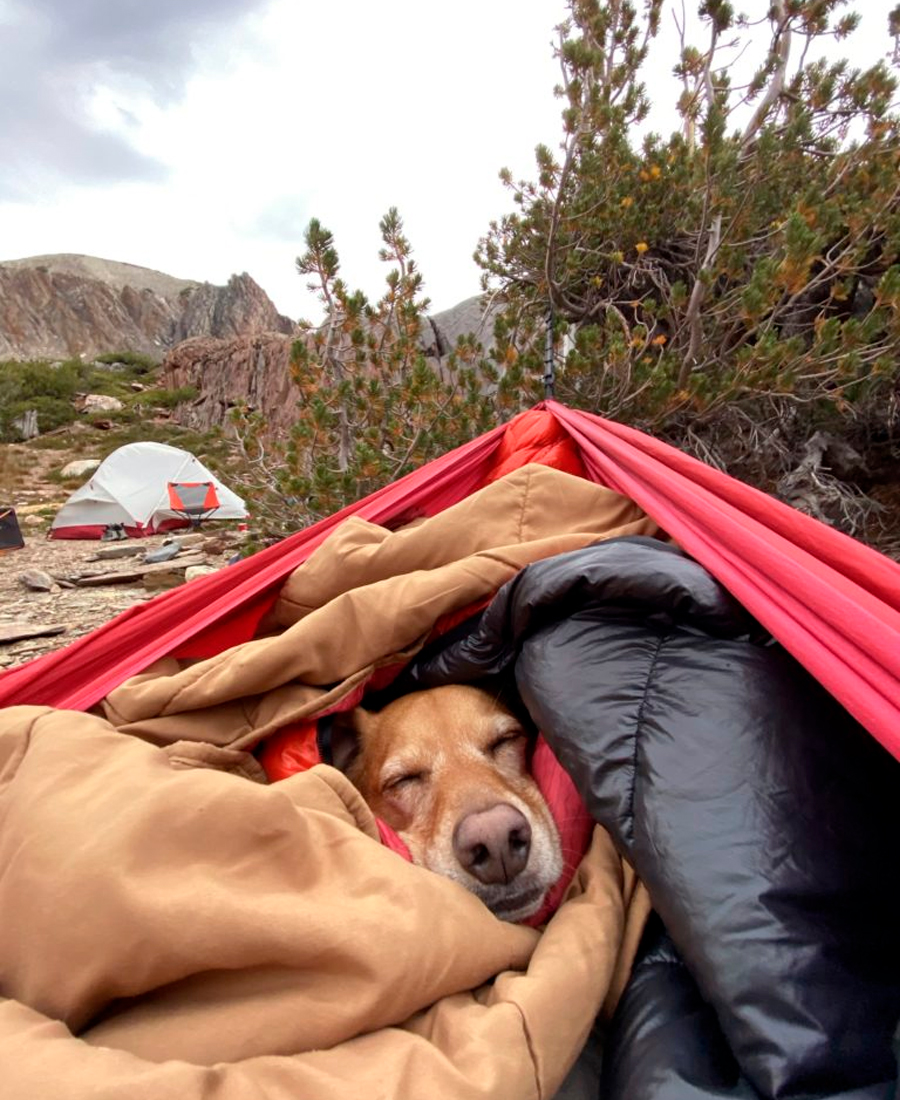

Back Support While Sleeping
Most camping hammocks are made of nylon. While durable, this thin material doesn’t provide much support. It’s intended to be flexible and light to take your hammock anywhere. If you’re someone who is looking for more support, you can create a more firm sleep system with the use of a sleeping pad.
Versatility Throughout Your Camping Trip
Sleeping pads provide great versatility in use. With a sleeping pad, you can camp directly on the ground or do tent camping. Additionally, you can use your sleeping pad as a great seat cushion while enjoying the great outdoors. If you spend time outside, you want a sleeping pad for these situations. Moreover, you can switch to using it when there aren’t enough trees to strap your hammock into.


Cost-Effective
There are two options for insulating your camping hammock: an under quilt or a sleeping pad. A sleeping pad is the most cost-effective option. Many sleeping pads are less expensive than a hammock underquilt. It’s important to note that a sleeping pad has many uses but an underquilt does not, making it the most cost-effective option for synthetic insulation.
Which Types of Sleeping Pads are Best for Hammocking?
Self-Inflating Sleeping Pads
If you’re looking for a firm mattress to line your hammock, a self-inflating sleeping pad is a great option. The open-cell foam within the pad is flexible enough to mold to your hammock and body yet firm enough to provide support. You can add to the firmness of your sleeping pad by blowing additional breaths of air into it. Self-inflating sleeping pads have some of the highest R-values. Don’t forget that not all sleeping pads are made for hammocking!
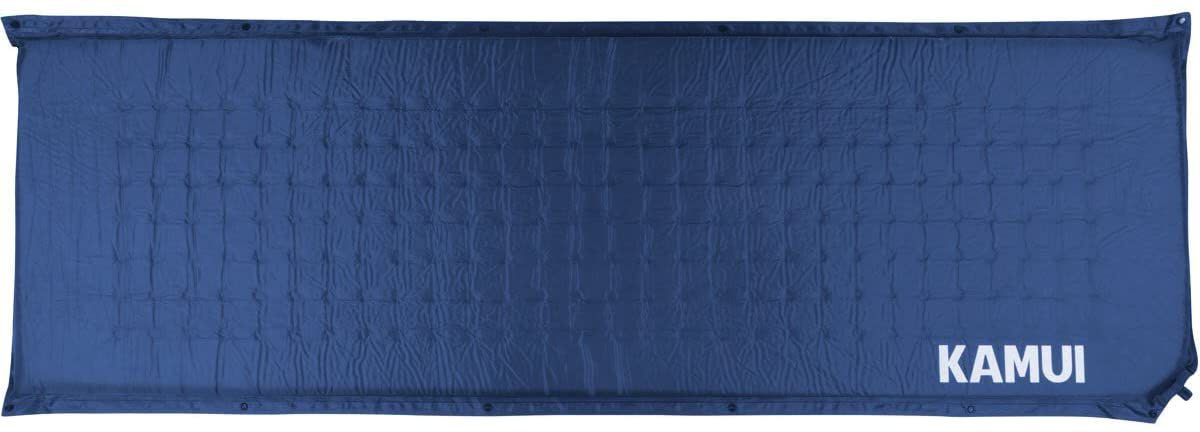

Inflatable Sleeping Pads
An inflatable sleeping pad is one of the best hammock sleeping pads. You can easily adjust the air inside the air pad to fit comfortably in your hammock. Air mats are known for their small packed size. They are lightweight and fold up to fit easily inside a backpack. The negative side of an inflatable sleeping pad is that it is prone to leaks. If this happens, a small field repair kit will be useful.
Foam Pads
Closed-cell foam sleeping pads are the most popular option for hammock campers. They’re light, making them a great option for someone looking to save weight with their hammock setup. Closed-cell foam pads are a great hammock sleeping pad because they’re relatively inexpensive. Many hammock campers will cut their closed-cell foam pad to fit their hammock better.


An added benefit of closed-cell foam pads is that they’re nearly indestructible. You won’t have to worry about damaging it beyond repair on a camping trip and being left without essential gear.
What Gear Should I Use When Camping in a Hammock?
Aside from a sleeping pad, a few helpful items for hammocking will enhance your camping experience. Let’s find out below:
Bug Net
A bug net is necessary if you’re hammock camping. You should add a bug or mosquito netting to your hammock gear collection. Hammock manufacturers came up with a hammock with a built-in bug net. This might work for you if you want to save time attaching mosquito netting.
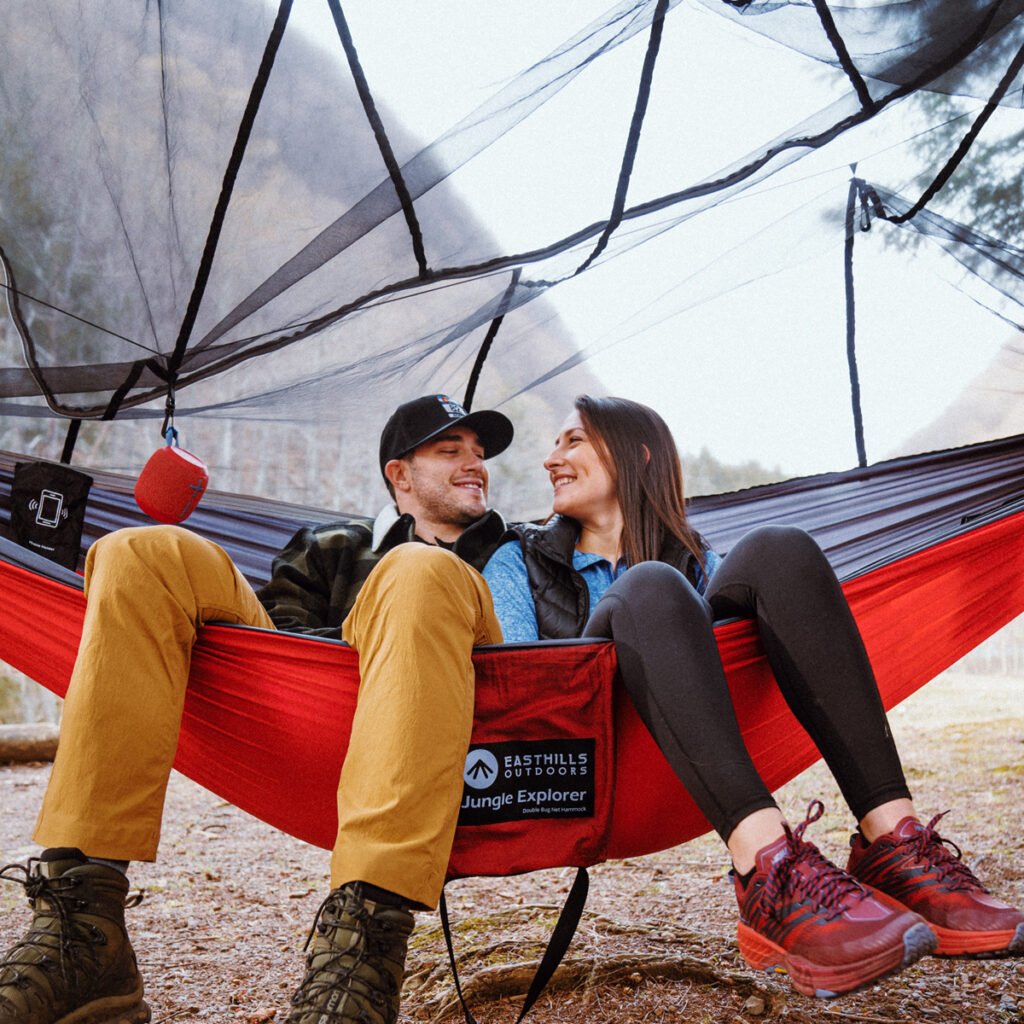

Rain Fly
A rain fly or hammock tarp is another important piece of equipment when hammock camping. This is a necessary accessory unless you can guarantee that there will be no rain on your camping trip. The rain fly is a large tarp that hangs over your suspended hammock. It’s designed to keep you dry while hammock camping. They can also be a wind block, keeping you warmer at night in case you’re not using a hammock tent.
Ridgeline Organizer
Organize all the gear you might need for the night with a ridgeline organizer. Keep your headlamp, water, and a pocket knife nearby while you sleep. One of the difficulties of hammock camping is not having the space to store your essential items close to you throughout the night.


Tips For Using A Hammock Camping Sleeping Pad
1. Opt for a Hammock-specific Sleeping Pad
Purchase a sleeping pad designed for hammock use or a hammock pad. Many include “wings” for support and insulation of your shoulders, arms, and hips. These hammocks are designed to fit into a hammock perfectly, unlike your everyday camping mattress.


2. Use a Hammock with Double-layered Fabric
Some hammocks are designed to hold a sleeping pad! The double-layer fabric or pocket provides a sleeve for your sleeping pad to slide right into. This means you will experience the comfort of hammocking with a sleeping pad without worrying about it shifting around in the middle of the night.
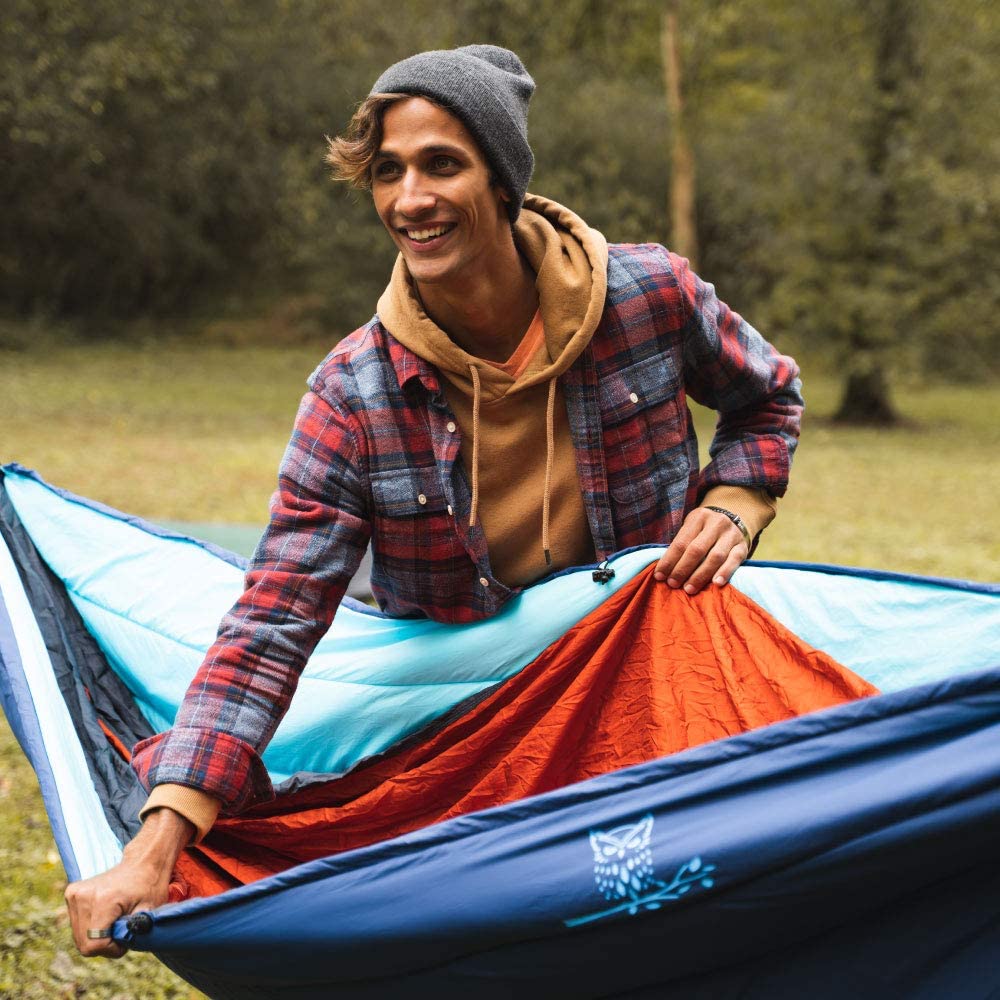

3. Underinflate your Sleeping Pad
This allows your sleeping pad the flexibility it needs to fit into your hammock. Your sleeping pad must be inflated enough so that its insulation properties are not being sacrificed for its flexibility.
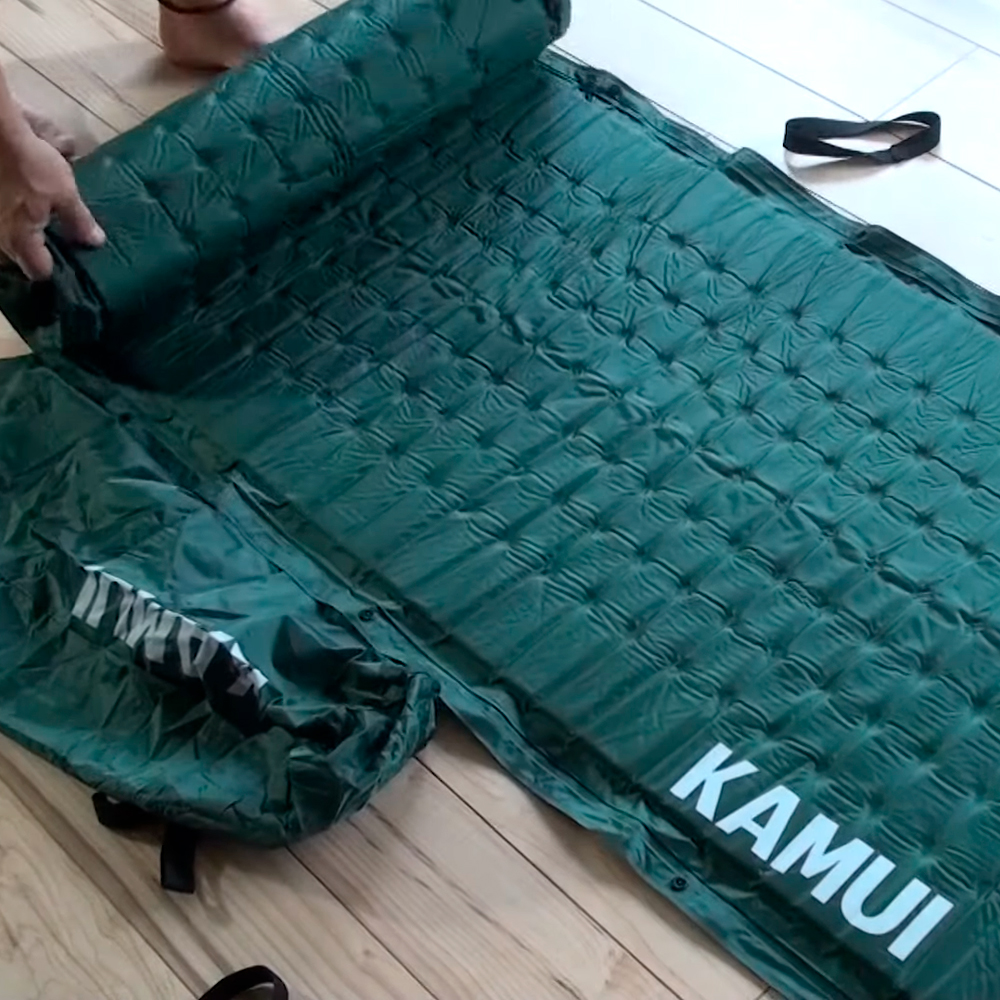

4. Put your Sleeping Pad in a Sleeping Bag
If you want to minimize your sleeping pad’s movement throughout the night, here’s a solution. Slide your sleeping pad into your sleeping bag, and then climb in! This is an excellent hack for hammock campers.
5. Add an Underquilt for Additional Warmth
If you’re hammock camping or winter hammock camping, add an underquilt for extra warmth. Underquilts are hammocking accessory that attaches to your hammock and provides additional insulation from the cold weather and wind.
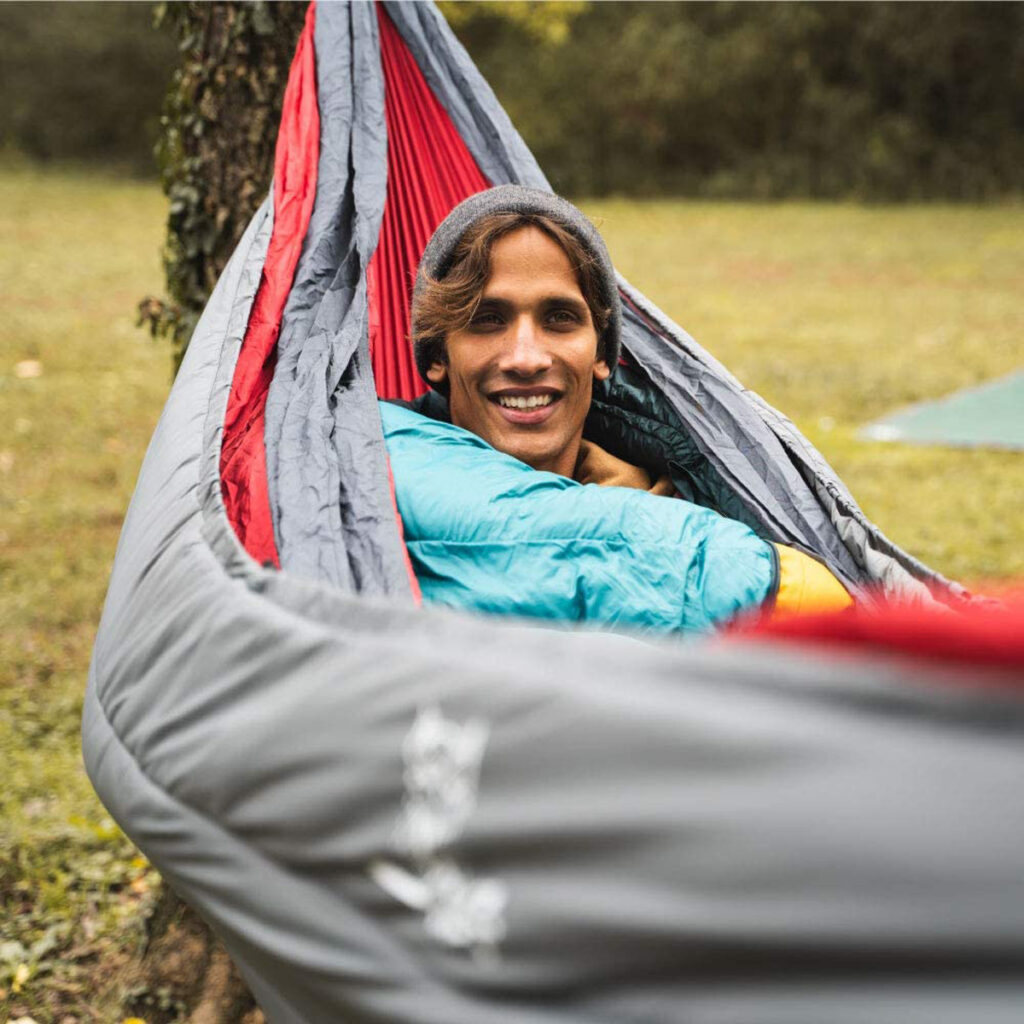

Conclusion: Hammock Camping Sleeping Pad
A sleeping pad is a great accessory to add to your hammock setup. Not only will your camping bed keep you warm and provide structure to your sleeping platform, but it might also come in handy in other situations.
If you want to improve your hammock camping experience, adding a sleeping pad is necessary! We hope our article helped you decide what hammock camping sleeping pad you need and how to use one.
FAQs
Why use a hammock sleeping pad?
A hammock sleeping pad that fits inside your hammock will keep you warm. It will even prevent you from experiencing cold-butt syndrome, which happens to hammock campers when their backside lacks the proper insulation against the cold air blowing under them. A sleeping pad with a sufficient R-value, like the KAMUI self-inflating sleeping pad in your hammock setup, is recommended. Be sure not to overinflate the pad so it can easily conform to the size of your hammock.
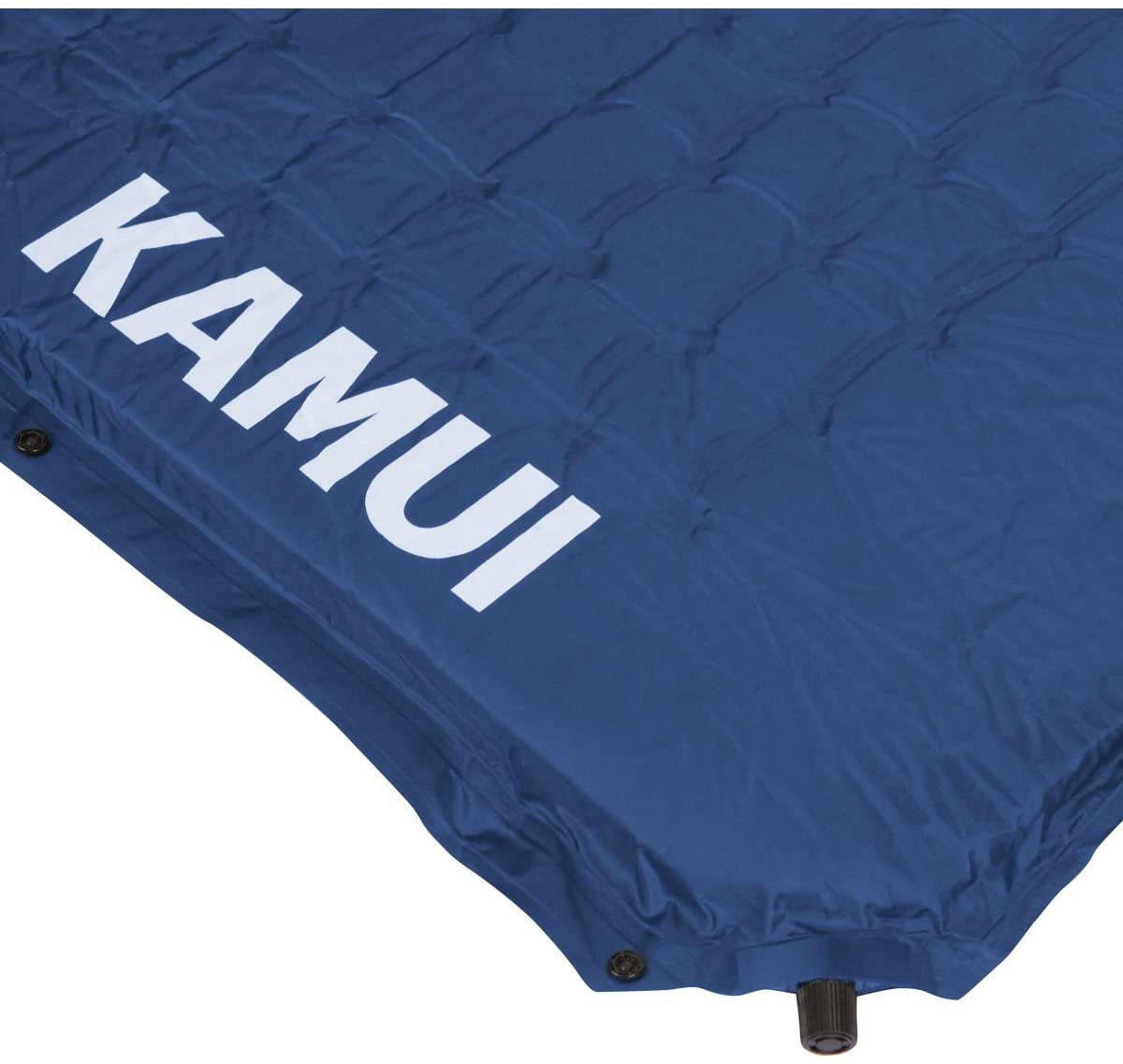

How do you stay warm while sleeping in a hammock?
If you prefer sleeping in a hammock while camping, weatherproof your hammock setup against the elements. A tarp or a rainfly would trap heat and protect you from rain or snow. Beneath you, you need an insulated sleeping pad to provide the warmth and padding you need. Additionally, a sleeping bag with a suitable rating will serve its purpose. Closed-cell foam pads may work as a barrier against the cold, but since they have low R-values, they don’t make the cut. Under quilts are excellent gear that is meant for winter hammock camping.


Why do you need a sleeping pad for your hammock?
If you wanted additional back support, especially when sleeping overnight, you would need a sleeping pad for your hammock. A sleeping pad will warm your backside if it has a suitable R-value. Spring and summer temperatures call for sleeping pads ranging from 2 to 4, while fall and winter conditions require a sleeping pad with an R-value of 5 and above. To find out more about sleeping pad R-values, check this guide.
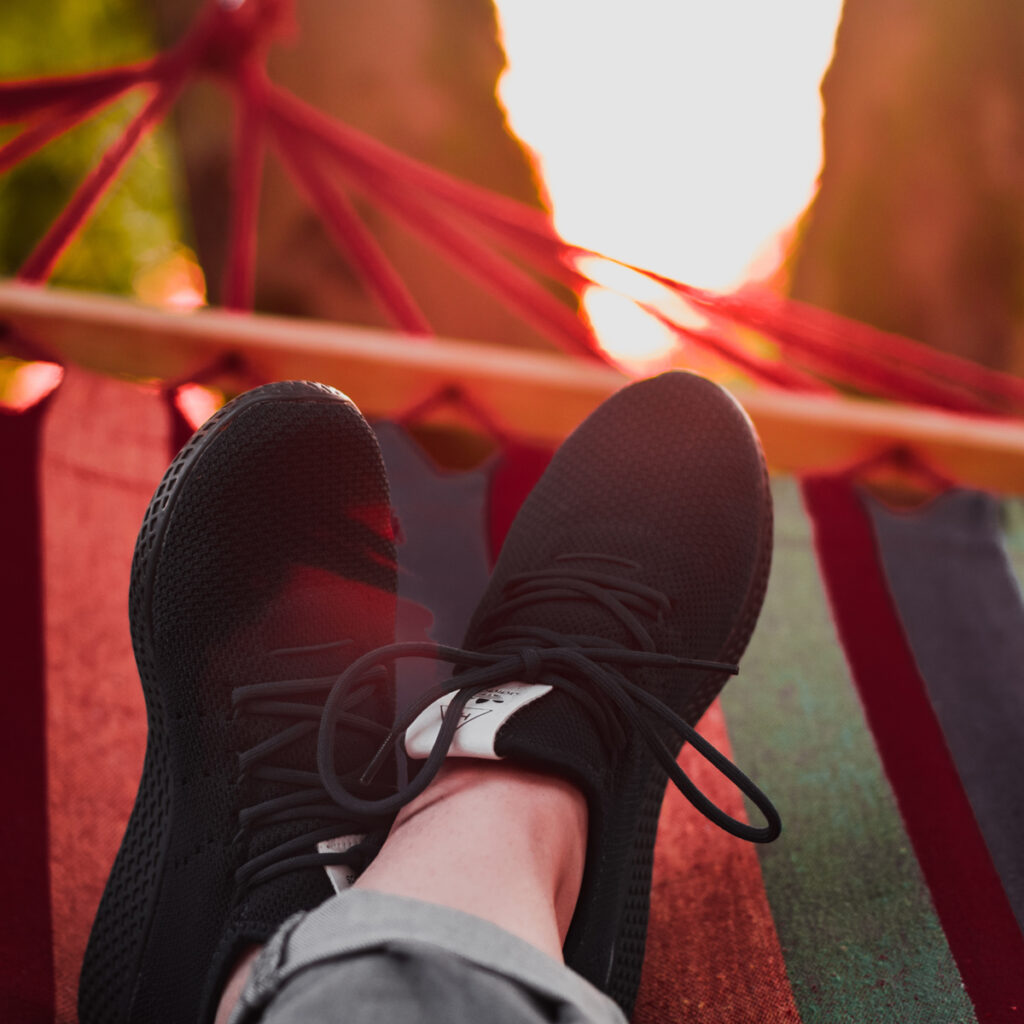

Which types of sleeping pads are best for hammocking?
Sleeping pads that have a combination of air core and open cell foam are the best types of sleeping pads for hammocking. These sleeping pads are better known as self-inflating sleeping pads. You don’t have to blow them up because once you open the air valve, it automatically sucks air through it. Just remember not to fully inflate it so that it can fit into your hammock. Your self-inflating sleeping pad will give you the warmth, cushioning, and back support you need when spending the night on a hammock campsite.
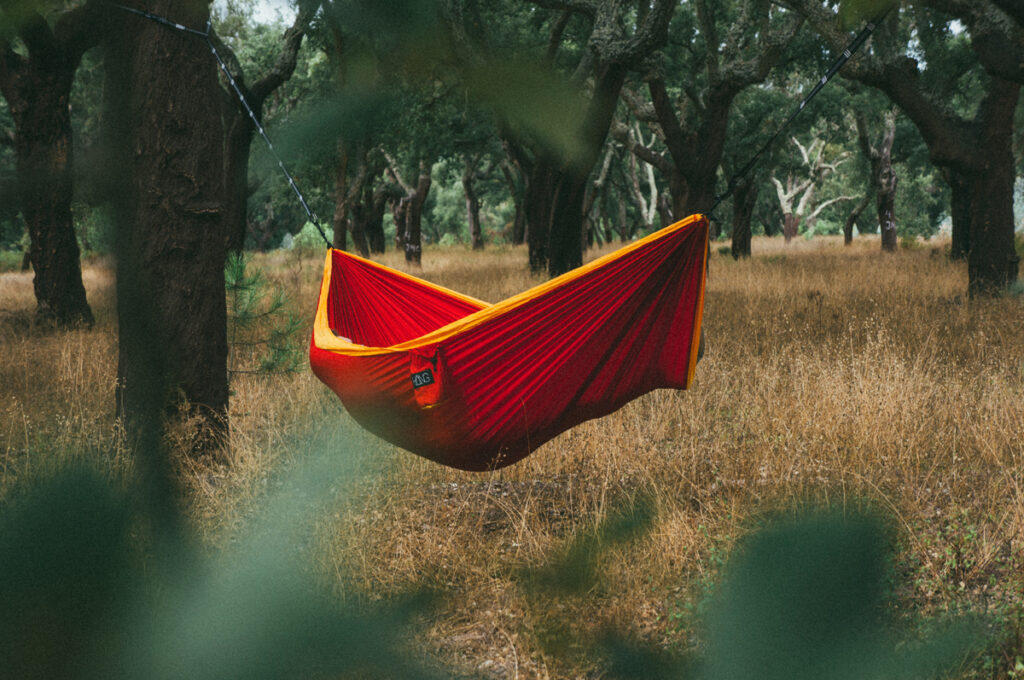

Why are people choosing hammock camping over tent camping?
People choose hammock over tent camping for many reasons, but most believe that hammock camping is more enjoyable and comfortable. Pitching up a hammock requires minimal effort if there are two trees to hang it. You can also avoid hard rocks, uneven surfaces, and crawling bugs. As for family campers or people who choose to snuggle when sleeping, ground camping may be their ideal setup.
KAMUI Self-Inflating Sleeping Pad
- Connectable with multiple sleeping pads
- 4-season sleeping pad
- Provides great back support
- Comes with a storage bag
